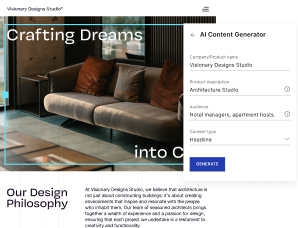Marketers are always hunting for ways to increase business growth and asking themselves questions how to do better and be better. One of those questions, regardless of product or industry, is how do I get more leads?
Leads not only help your business survive, they make it thrive. Even if you have an amazing product, a good customer base and a proven customer retention plan in place, without a constant stream of leads coming in there is little chance for business growth.
Today’s article showcases many ways how to generate leads so you can nurture them to sale.
13 Recommended ways to get more leads
Listed below are 13 lead acquisition techniques you should consider for your business and all your digital marketing campaigns.
1. Google Ads extensions
Google Ads offers advertisers and marketers a variety of avenues to generate new business leads, and ad extensions are one of the most hassle-free methods for lead acquisition.
Ad extensions are a built-in Google Ads feature (Bing, too) that can effectively make your search ads bigger in the SERP but don’t require additional budget. By using the extensions, you have a better chance to increase ad visibility, click-through rate, and post-click landing page visits.
Since ad extensions add detail to your offer, they give users more reasons to click your ad. Plus, search engines give priority to the top ad positions when displaying extensions. In the examples here, each hyperlink below the ad description is a specific ad extension for Airtable and Hootsuite:
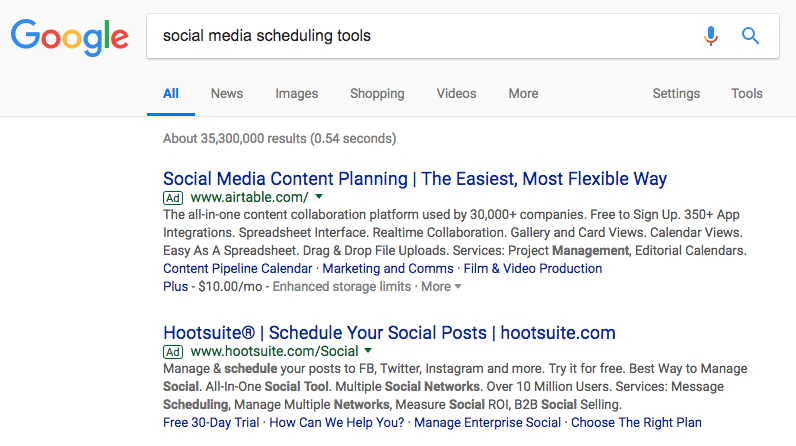
A variety of manual and automated extensions are available and not all will be applicable to your brand or product. Keep in mind that only advertisers that earn a high enough ad position and ad rank are eligible to show ad extensions.
2. Gmail sponsored ads
Target prospects that are likely to be interested in your offer and reach them on a page they open multiple times every day — their inbox — even if you don’t have the prospect’s email address. Gmail ads give you the opportunity to do just that.
Gmail sponsored ads are display ads served to prospects’ inboxes and appear above organic emails with an ‘ad’ label next to them. The ads consist of 2 components, a teaser and an expanded ad unit. The teaser includes a 25-character text headline, 100 characters of body text, and you can also include an image. When a prospect clicks the ad, it opens up the full ad which looks like a regular email.
Grammarly promotes their free writing tool via Gmail ads. First the teaser, then the expanded ad with image and CTA button:
![]()
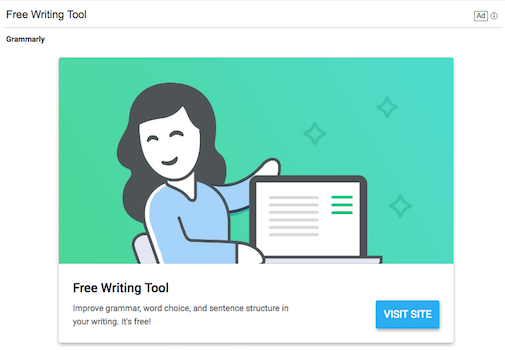
Also, don’t forget to connect your Gmail Sponsored Ads to relevant post-click landing pages to ensure that you don’t just get the ad click, but the lead.
3. All of the Facebook Ad options
Whether you’re collecting leads for an ebook, a free trial, or a webinar, Facebook Ads is one of the best platforms to use. Facebook Ads provide you with multiple audience targeting options and ad segmentation capabilities along with the largest pool of social audiences to help you generate leads for your business.
When you promote offers via Facebook Ads you have the option of choosing from different ad types depending on the conversion goal of your campaign.
Among other ad types, you can choose between:
- Link click ads
- Boosted page posts
- Video ads
- Lead ads
- Messenger ads
- Carousel ads
- Canvas ads
- Mobile app install ads
- Event ads
The Economist uses their Facebook ad to promote their 12-week subscription offer:
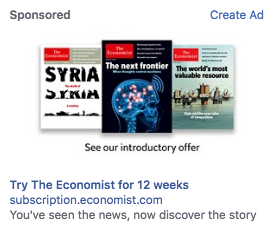
The social network also comes equipped with sophisticated targeting options that help you zero-in on your ideal audience segment. Targeting options include interests, demographics, behaviors, and connections.
You can even create Instagram ads from the Facebook Ads Manager even if you don’t have an Instagram account.
4. Chatbots
Conversational marketing (aka chatbots) is a one-to-one approach to marketing that businesses use to shorten their sales cycle, learn about customers, create a more human buying experience, and collect leads.
Chatbots are used as a replacement for lead capture forms; the bots capture leads in real time — even when you’re offline. Like lead capture forms, chatbots ask leads qualifying questions helping you segment your leads effortlessly.
The bots combine inbound and outbound marketing techniques and start a dialogue with users who come to your website and have a question about your services. Since conversational marketing takes place in real-time collecting a lead via the channel is easy. To demonstrate, HubSpot recapped their chatbot success in a recent webinar detailing how they use the technology in their demand gen campaigns.
The Instabot prompts a website visitor a few moments after they’ve opened up a web page and asks if they need any assistance:
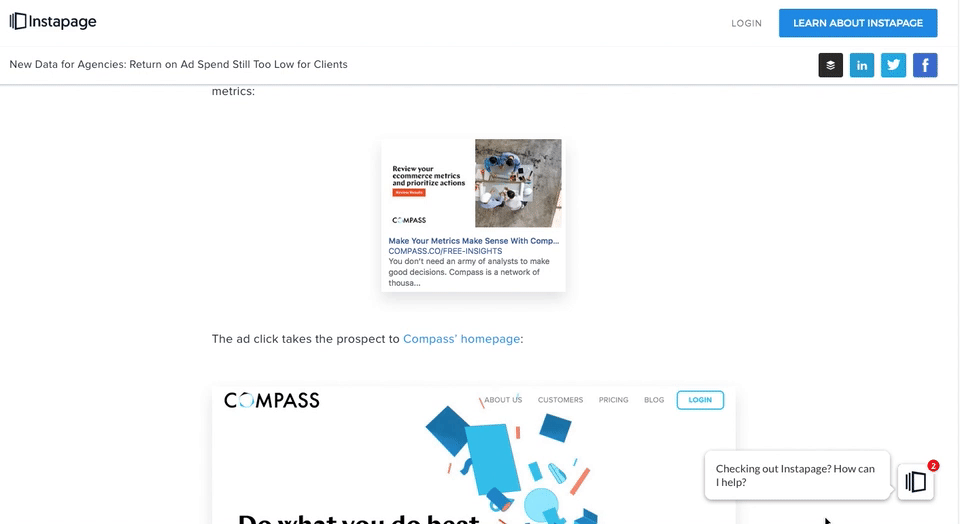
5. Retargeting ads
Retargeting ads are display ads that allow you to call back visitors who have left your website or post-click landing page without converting. When targeting the right audience, retargeting ads can persuade visitors to revisit your offer when they need it. The difference between retargeting ads and other display ads is that, retargeting ads are shown to your previous website visitors instead of new prospects.
The ads help remind visitors about your services and are targeted for offers that are specific to their website visit so they can be persuaded to click the ad, click through to the post-click landing page and enter their details — allowing you to collect the lead.
You can set up retargeting campaigns in all major digital advertising platforms, such as Google Ads, Facebook Ads, LinkedIn, Instagram, and Bing.
Here’s an example of Webchat’s retargeting ad:
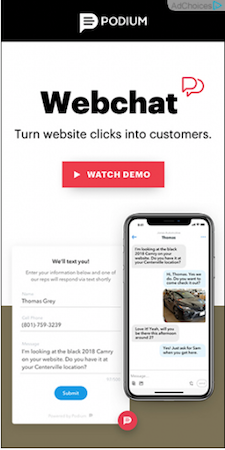
To ensure that you are successful at capturing leads via retargeting ads don’t forget to connect your ads to relevant post-click landing pages.
6. Bing Ads
Google Ads dominates the search and paid advertising channels, which is the primary reason why marketers often overlook Bing as a lead acquisition channel.
The truth is, Bing is definitely worth paying attention to since it has powerful benefits. Ignoring Bing Ads for paid campaigns means you’re ignoring a huge chunk of advertising space, 66 million prospects to be exact. You can run search or display ad campaigns in Bing Ads to promote offers and capture leads for your business.
Here’s what a typical Bing search ad looks like:

When you promote your offers via Bing Ads your ad is advertised on all Bing, Yahoo, and AOL owned and operated sites, along with various partner websites. Plus, Bing Ads have less competition and cheaper CPCs, better device targeting options, better social extensions, and more control over search partner targeting.
7. Inbound marketing with lead magnets
Brands that produce more and more quality content will generate more leads. But to maximize those efforts, lead magnets have to accompany the content.
A lead magnet is an incentive or offer, usually a content download, demo, or free trial connected to a post-click landing page or lead capture form. The purpose of the lead magnet is to generate leads for your sales funnel. Incorporating them into your inbound marketing efforts is a great way to draw attention to these gated assets and add prospects to your email database.
You can experiment where to place the CTA (in content, end of article, slide-in, pop up, etc.) but the key thing to remember is to make it noticeable and persuade readers to convert.
Grow & Convert uses lead magnets in the middle of their blog posts:

Here at Instapage we include relevant lead magnets at the end of each blog article:
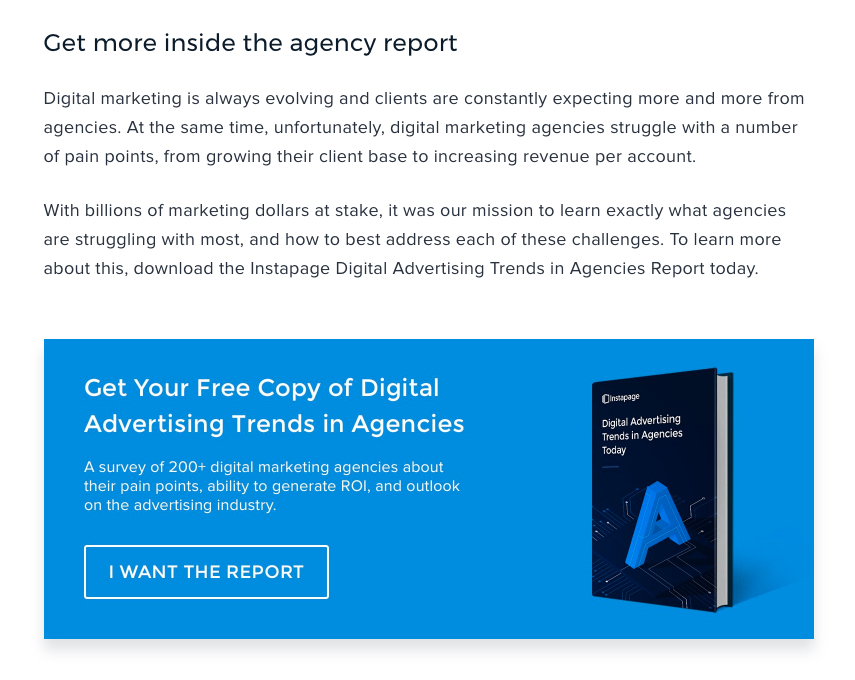
Whether you’re creating new content or repurposing old content in a new format, lead magnets are an effective way of collecting leads from your blog.
8. YouTube End Screens and Cards
YouTube is not just a video hosting platform; it has become a powerful search engine. Moreover, it is used more often by users than social media websites, such as Facebook and Instagram. Why not leverage this user engagement power and collect leads for your business?
One of the ways to do this is with YouTube End Screens and Cards, which are large, clickable tiles visible at the end of a video:
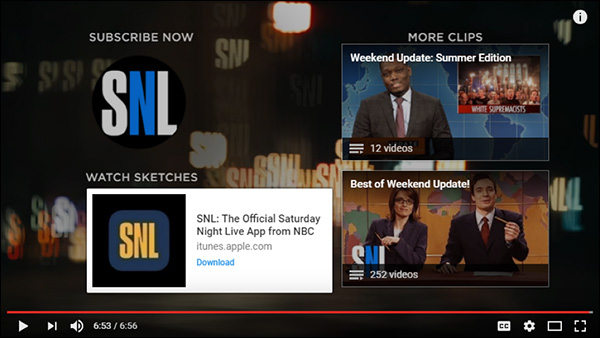
End Screens can be used to direct visitors off the site to a post-click landing page with additional information about the video and collect user information. Just make sure to add UTM parameters so you can track post-click landing page visitors accurately.
YouTube cards are pre-formatted notifications allowed on videos you can use to direct visitors to dedicated post-click landing pages with a related offer. The cards appear in the top-right corner of the screen and YouTube recommends placement be in the last 20% of your video:

To encourage viewers to click through, adding a persuasive headline and CTA to the card can certainly help, too.
9. Gated webinar replays
Webinars are a tried-and-true, proven lead gen technique, but what many marketers forget to realize is that webinars can be beneficial before and after the presentation.
Just because you generate leads all the way up until the presentation begins, does not mean you can’t continue getting leads after the session. What you do in this case is remove the date and time, along with any countdown timer from the post-click landing page, and make it clear to “watch the replay” or “watch the webinar on demand.” This is especially helpful for acquiring leads that may not attend the live presentation.
This is what we do at Instapage. Here’s the CTA banner for the gated webinar replay and its corresponding lead capture post-click landing page. The post-click landing page is identical to what it was pre-webinar, except now the CTA copy changed from “Sign Me Up” to “View Webinar:”
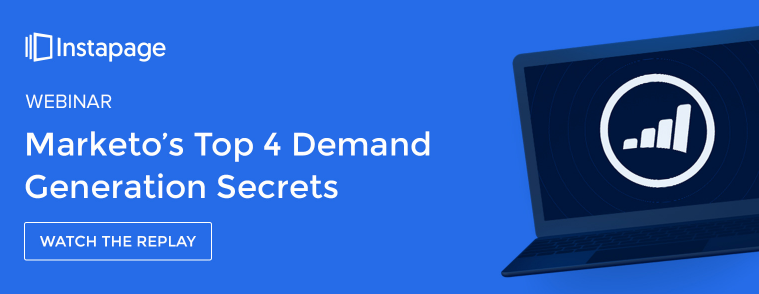
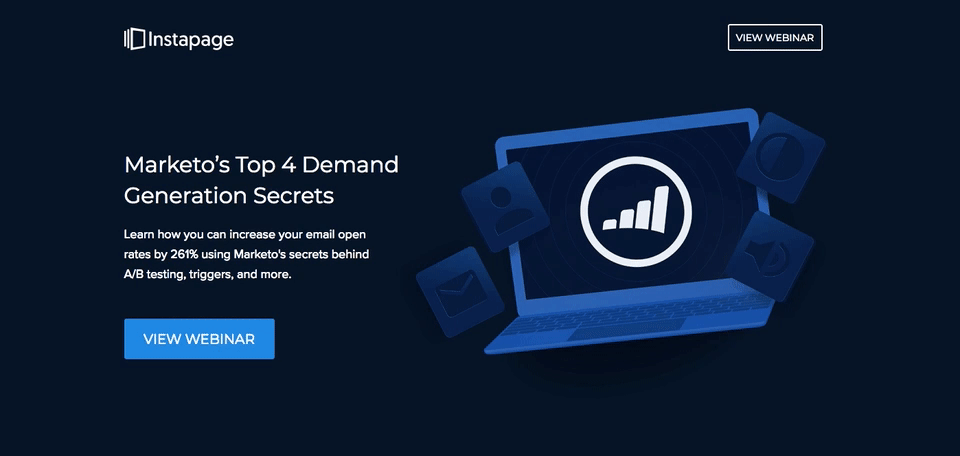
10. Highly-targeted LinkedIn Ads
LinkedIn provides B2B businesses a valuable platform to run their paid marketing campaigns on the network and collect leads. Since the network is full of business professionals and decision makers, brands can develop highly-targeted ABM campaigns reach exactly the prospects they desire.
In addition, the platform offers marketers advanced targeting options like Matched Audiences, a flexible budget, multiple language options, and performance measurement through analytics and data tracking tools. Not only that but many ad types are available such as sponsored content posts, InMail ads, and text ads to collect leads for your offers.
Here are few LinkedIn ads, the Asana example is a banner ad type typically found in the right margin and the second is often located on a user’s profile page above the feed, below the navigation:
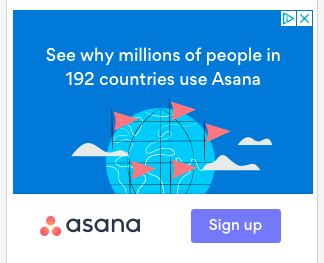
![]()
For more details, check out this article that highlights 12 unique ways to generate leads from the networking site.
11. Twitter Direct Message Cards
Twitter has 330 million monthly active users, who send around 500 million tweets daily, making it a lucrative platform to promote your ads and collect some leads.
The social network’s Direct Message Card ad format allows you to send image and video ads with a customizable CTA button directly to your prospect’s Twitter inbox. The Direct Message Cards can currently be used for promoted tweets and video views objectives.
You can use the ads to persuade the user to learn more about your brand by entering their information.
Here’s what a typical Direct Message Card ad looks like:
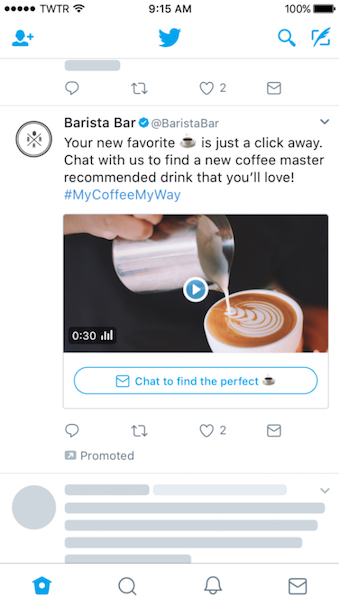
12. Email signature
Most marketers don’t realize the full potential of their email signatures as a tool for lead generation.
You likely send multiple emails to your business contacts every single day, and every one of those emails is a lead gen opportunity if you simply include a link to gated content or a lead magnet in your email signature. The CTA does not have to be overwhelming or take away from the email’s contents. Adding a text hyperlink is sufficient.
This is precisely what our team at Instapage does:
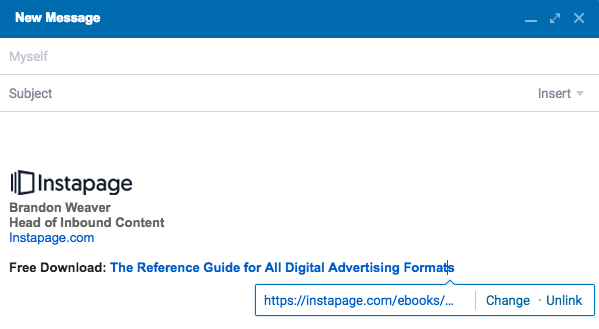
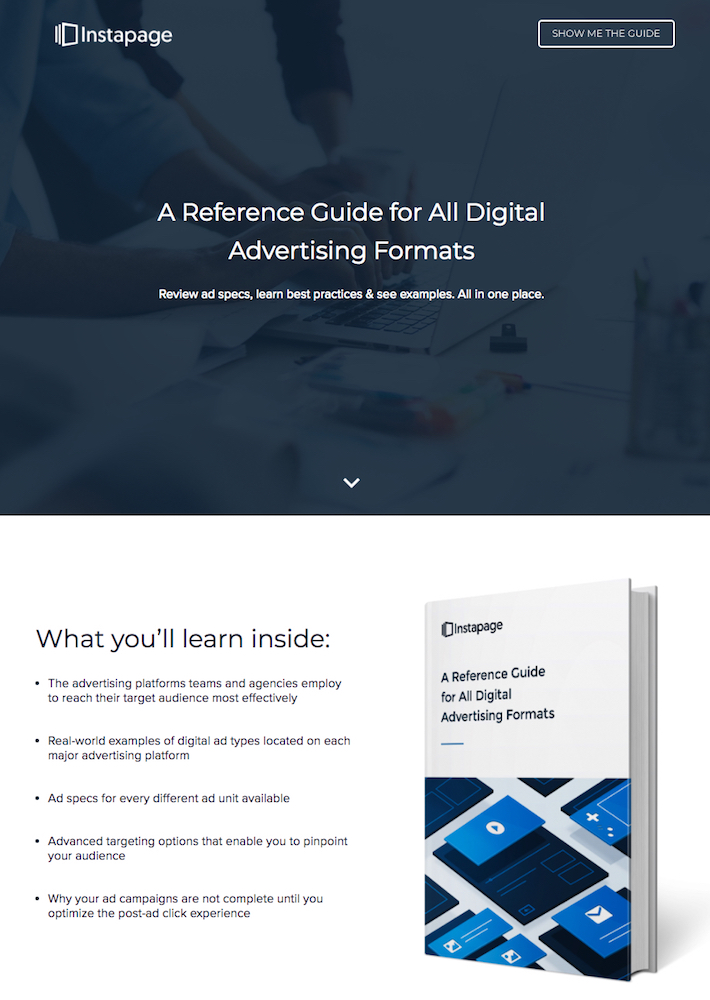
13. Referrals
Word-of-mouth is a powerful persuasion technique to get new leads. So, when you hear about a good a product or service from someone you trust, you are likely to research and try that product too. Capturing leads from referrals is beneficial because the technique leverages influencer power and is cost effective (this is true in the case of previous customers).
A Heinz marketing study found that businesses with formal referral programs reported almost 40% of their leads coming from referrals, whereas businesses without referral programs attributed only 22% of their leads to referrals. Translation: establishing a program for customers to evangelize your brand can only benefit your lead gen campaigns.
Create a referral program that encourages and gives incentives to customers who refer your product and use your LinkedIn network to reach out to influencers for referrals.
More new business leads equal more business growth
Your potential audience’s name and email address are perhaps the most coveted piece of information regarding business growth. Every sale, ebook download, webinar registration, and free trial sign-up begins with a lead.
Use the 13 lead acquisition techniques mentioned above to get more leads for your business and jumpstart your business growth today.
Also, learn how to provide 1:1 ad personalization for every audience you have with an Instapage Enterprise demo today.

See the Instapage Enterprise Plan in Action.
Demo includes AdMap™, Personalization, AMP,
Global Blocks, heatmaps & more.

